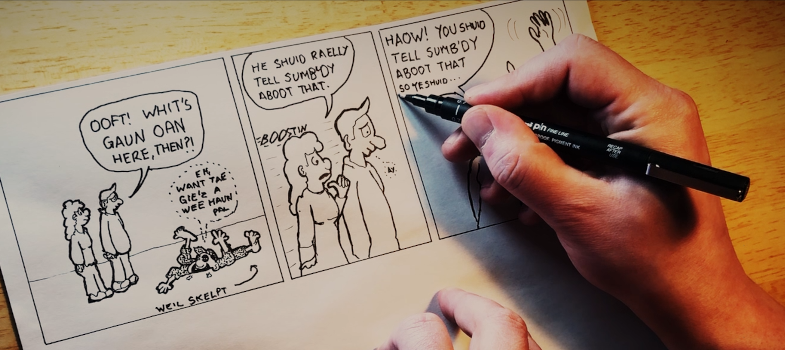Scots language in literature and creative writing

© Pauline Turner
1. Introduction
This unit by Pauline Turner allows you to explore the rich diversity and creativity of the Scots language through a wide range of literature before applying resources and techniques to your own teaching of creative writing using Scots.
Contemporary Scots is written in the manner in which it is spoken and since there are multiple dialects, each with their own distinct grammatical and syntactical features, it is important for learners to listen to the sounds, intonation and rhythm of the words, as well as the way in which sentences are constructed. Therefore, listening and reading texts aloud as often as possible is a fundamental part of the creative writing process irrespective of the related reading and writing level within the Curriculum for Excellence (CfE).
Although perhaps initially daunting, it is this language diversity and the idiosyncratic features of Scots which lend themselves perfectly to creative writing. For learners whose first language is Scots, writing in their mither tongue brings not only freedom of expression, but expands their linguistic repertoire and therefore creativity, while also supporting and improving written English. Where Scots is being learned as a second or third language, first language speakers of Scots can support them in the classroom, particularly in oral storytelling and reading aloud. Overall, creative writing offers a privileged and 'safe space', particularly in fiction writing, to explore identity and experiment with language.
Based on Education Scotland's Creativity across learning 3-18, Impact report, your knowledge of the Curriculum for Excellence (CfE) reading and writing levels, as per Literacy and English: experiences and outcomes, and your own interests and experiences, you will study this unit to accomplish the following objectives.
Key learning points
to learn about the role of Scots language in literature and its use in informing and supporting creative writing in the classroom.
to understand the integral nature of Scots language creative writing within other areas of the curriculum.
to write a lesson plan for Scots language creative writing, sourcing and evaluating appropriate tools and resources.
to embrace community resources and encourage involvement of learners' family and friends as a bridge beyond the classroom.
